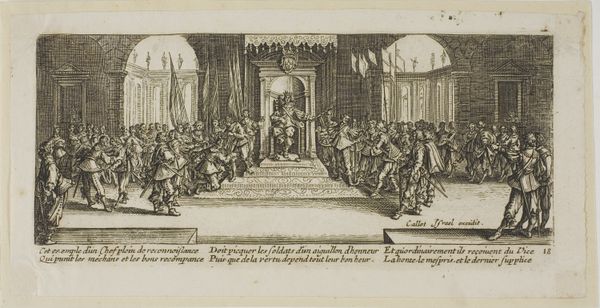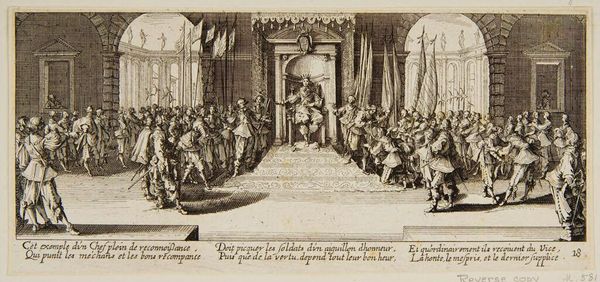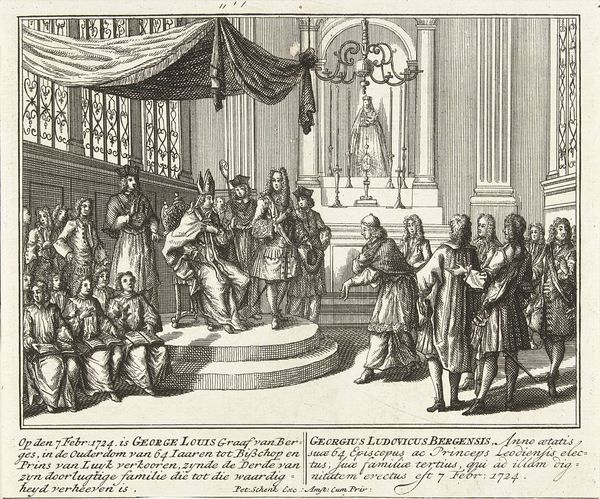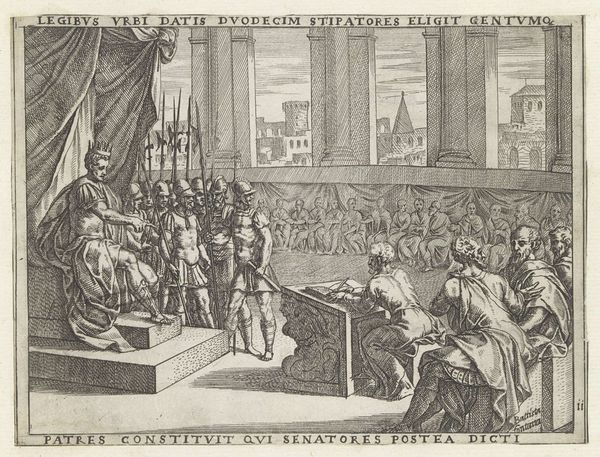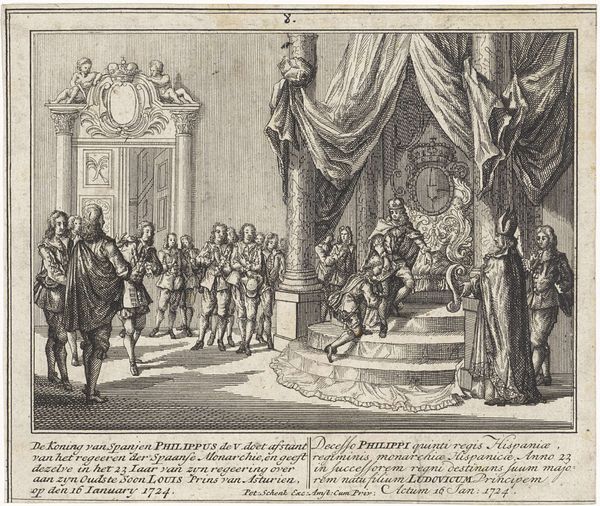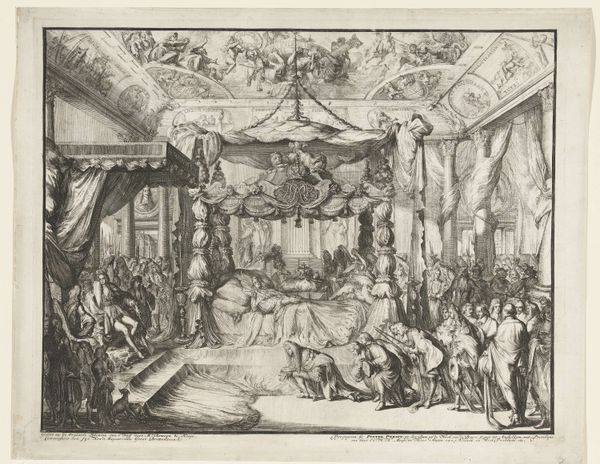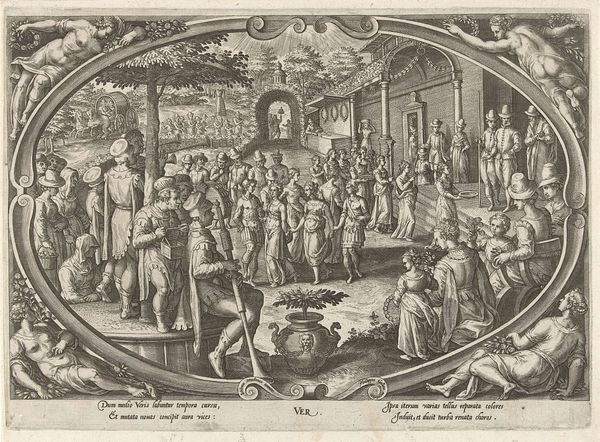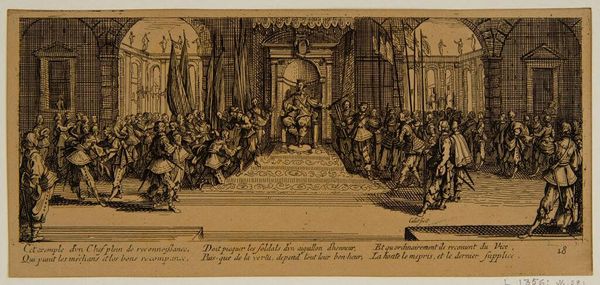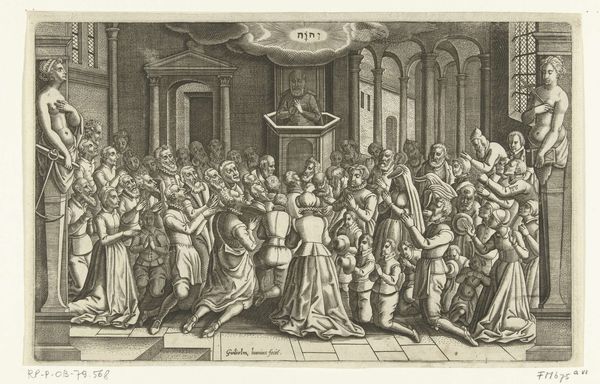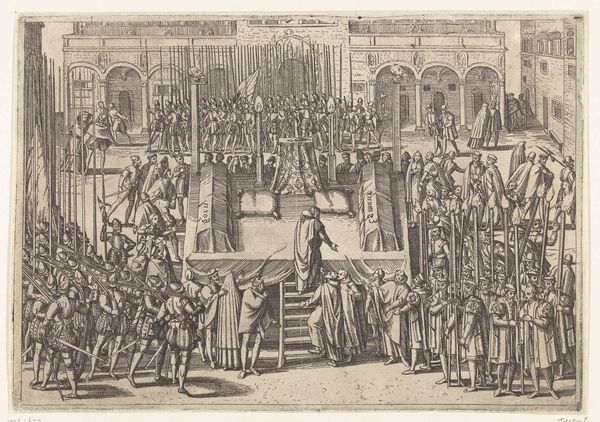
print, engraving
#
narrative-art
#
baroque
# print
#
genre-painting
#
history-painting
#
engraving
Dimensions: 83 mm (height) x 188 mm (width) (plademaal)
Editor: Here we have Jacques Callot's "Belønninger uddeles af kongen," an engraving from 1633. The scene depicts a king bestowing rewards, I believe, on his subjects in a grand hall. It feels very… theatrical, almost like a stage production. What catches your eye in this piece, and how do you interpret the artist’s message? Curator: What I see here is a meticulously crafted tableau of power, deeply rooted in the social and political realities of the 17th century. Consider the Baroque period. Callot, working amidst religious conflicts and rising absolutism, captures the performance of authority. The king, elevated on his throne, becomes the focal point but is surrounded by supplicants vying for attention and favour. This, to me, reflects the hierarchies of power – think about class, military rank, even access to the court! How might this resonate with contemporary discussions of systemic inequality and privilege? Editor: That’s interesting! So you're saying the "rewards" are almost symbolic of these power dynamics? Curator: Precisely! Think of Foucault's concept of power as something diffused, rather than just possessed. It's in every exchange, every gesture. Even the architecture – those vast arches and regimented figures – serves to reinforce a system of control. Also consider Callot's background and what sources did he draw from. Editor: I never considered it like that. The order and grandeur almost mask the struggle for power. Curator: And the engraving medium itself makes it accessible, able to circulate and propagate certain ideas. It prompts us to question what those ideas might be in our present society. Editor: It’s like a mirror reflecting how those power structures persist, even if they appear differently now. Thanks, that really opens up how I see the work! Curator: Absolutely. Examining the historical roots of our present inequities encourages critical reflection.
Comments
No comments
Be the first to comment and join the conversation on the ultimate creative platform.
